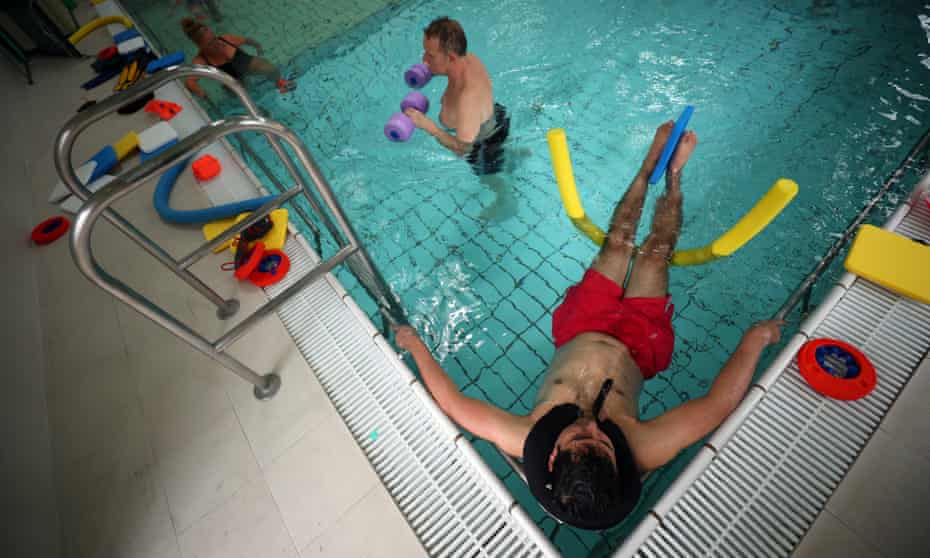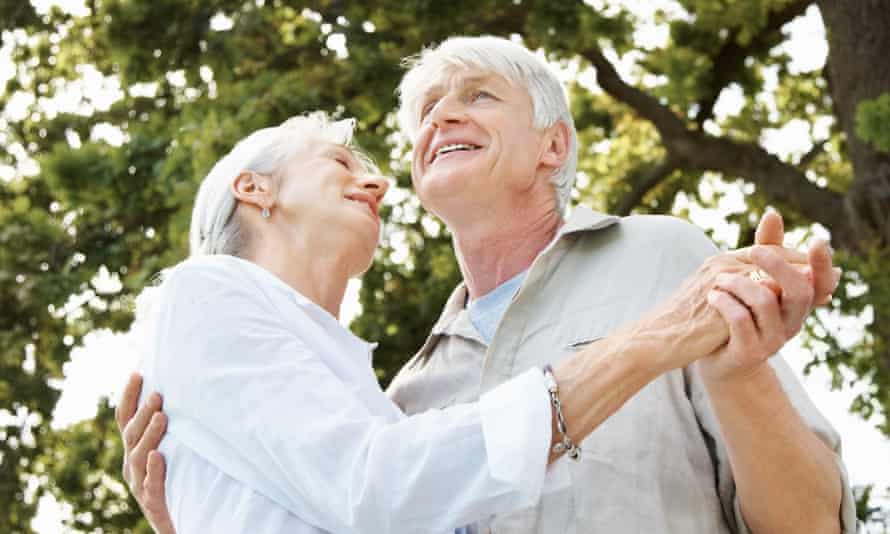From theguardian.com
Activity encourages the body’s healing functions – ‘if you rest, you rust,’ a rheumatologist says – and every form of arthritis can benefit from exercise
Rheumatoid arthritis is an autoimmune condition where your immune system mistakenly attacks healthy tissue in and around your joints, causing ongoing inflammation and pain. Some people have arthritis in the small joints of their hands and feet. In others, the inflammation involves major joints, such as the shoulders and the hips.
Sometimes just getting out of bed and making it through the day with rheumatoid arthritis may feel like all you can manage. “But humans are designed to move,” says Dr Daniel Lewis, a rheumatologist and chronic pain specialist.
He says every system of the body – from the endocrine system to the nervous system, the musculoskeletal system, the sleep-wake cycle and mental health – is influenced by how physically active we are. “When you stop moving, systems start to collapse,” he says. “Movement encourages the natural healing function of the body – if you rest, you rust.”
 Hydrotherapy involving slow, controlled movements can be helpful in treating rheumatoid arthritis, especially if the pain makes exercising a challenge. Photograph: Hannah McKay
Hydrotherapy involving slow, controlled movements can be helpful in treating rheumatoid arthritis, especially if the pain makes exercising a challenge. Photograph: Hannah McKayErrol Lim, a physiotherapist and the managing director of BJC Health, says that in the early stages of the disease, exercise can help prevent worsening of the joints. In more advanced stages, exercise can help reduce stiffness and pain. It can also improve mood and self-confidence.
“There is no form of arthritis that won’t benefit from exercise, and a form of exercise can be found for every individual, irrespective of the pattern of their arthritis,” Lewis says. “Age is no barrier.”
Activities like strength training and low-impact workouts can help relieve the pain. Here is a simple guide that can help you get moving, but it is always best to seek advice from a physiotherapist before you begin an exercise program.
The class: hydrotherapy
Hydrotherapy can be beneficial in treating rheumatoid arthritis, particularly when the pain makes exercising a challenge.
It involves a series of exercises that generally focus on slow, controlled movements done in a warm-water pool.
The water temperature is usually 34ºC, warmer than a typical swimming pool. The water supports your weight, and the warmth allows your muscles to relax and eases the pain in your joints, helping you exercise.
The water also provides some resistance to moving your joints. By pushing your arms and legs against the water, you can improve your muscle strength.
The move: the deadlift
Everyone could benefit from the deadlift exercise, Lim suggests. “That’s a really functional position for all of us,” he says. “That’s how we lift children, how we lift our luggage, the box from the boot of our car, the six bottles of wine that we carry back from the supermarket.”
Stand upright with your feet shoulder-width apart and your hands just outside your legs. Travel your hands along your thighs as you bend your knees and hips, keeping the spine straight. Then slowly lift by straightening the legs, as if you are picking up something from the floor.
Lim recommends beginning with this simple movement and then progressing by increasing the number of repetitions or adding lightweights. “It’s a very slow progression.”
The deadlift forces you to grip, recruiting the wrist, forearm and shoulder muscles. “A significant percentage of people with rheumatoid arthritis have issues with their upper back and neck,” Lim says. “This particular exercise can help with that.”
The activity: dancing
Dancing can be a fun activity to keep the body moving. Dancing can help improve blood circulation and lubricate your joints, improving flexibility. It also releases serotonin and endorphins in your brain, which lift your mood and help prevent the mental health issues often associated with a chronic disease.
 Dancing doesn’t need to vigorous to benefit people with rheumatoid arthritis. Photograph: Joshua Hodge Photography/Getty Images
Dancing doesn’t need to vigorous to benefit people with rheumatoid arthritis. Photograph: Joshua Hodge Photography/Getty ImagesDancing does not need to be vigorous. Small, rhythmic movements that follow your favourite tune can still offer the joy of dance without putting too much pressure on the joints.
Lim says he was surprised to find that dancing is very popular among his patients. “It’s the music, and people love moving with it.”
The hard pass: don’t overdo it
Lewis says people with rheumatoid arthritis should avoid exercises that aggravate pain or make it last into the next day. “It’s about finding the movement that allows people to function and keep their body moving, but not flare up.”
“We spend a lot of time teaching our patients how to do appropriate pacing,” says Lim, “and staging the amount of activity they do throughout the week. We teach them how to listen to their body so that they know they’re not over-pushing it.”
https://www.theguardian.com/lifeandstyle/2022/jan/03/how-to-move-with-rheumatoid-arthritis
No comments:
Post a Comment